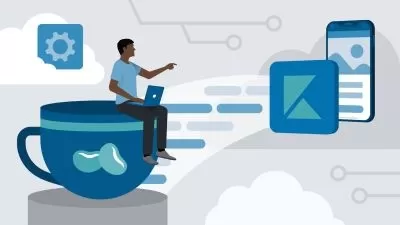Building Web Applications in Kotlin 1 Using Ktor
Kevin Jones
2:11:42
Description
If you are looking to build scalable web services or clients on the JVM then Ktor is for you. Written in Kotlin, this is an extensible, lightweight framework that uses coroutines to provide an easy to test and easy use asynchronous programming model.
What You'll Learn?
Many web applications and services are built using the Spring Framework. While Spring is incredibly powerful and useful nobody can accuse it of being lightweight. Many developers look for something that ‘just works’, that does not have too much overhead. In this course, Building Web Applications in Kotlin 1 Using Ktor, you will learn about the framework that more and more JVM developers are looking at as a programming language because of the benefits it has such as support of immutable data and null detection, as well as having less of the bloat of Java. Bring these two together, a lightweight HTTP framework and a nice programming language and you get Ktor. First, you will explore Ktor - an open source project developed by JetBrains, the creators of Kotlin. It is heavily based on Kotlin coroutines and so supports a high degree of asynchrony. Next, you will discover how you can use Ktor to develop both REST and HTML based web sites that are secure and extensible. Finally, you will gain an understanding of how to produce complex server-based applications or standalone HTTP client applications. When you are finished with this course, you will know how to create web applications and REST APIs in Ktor.
More details
User Reviews
Rating
Kevin Jones
Instructor's Courses
Pluralsight
View courses Pluralsight- language english
- Training sessions 47
- duration 2:11:42
- level average
- Release Date 2023/10/10










